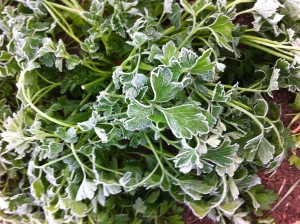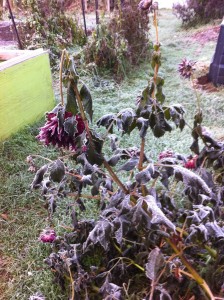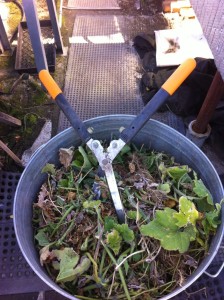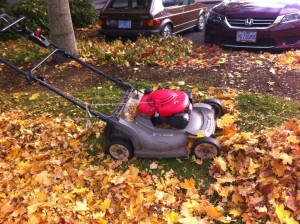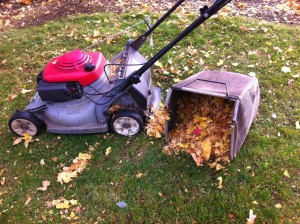It is fall, and there are a lot of things to put into the compost bin. At my school garden a hard frost hit two nights ago, and while it made parsley leaves stand out in exquisite relief…
it also turned the dahlias to mush (but they were oh, so beautiful in the early morning while still frozen)
When the magic wore off mid-morning, there were stalks of a good many things to compost. Add that to all the other debris from spent plants and falling leaves, and the total can easily overwhelm a compost pile. If not well prepared, all this new compost material just sits and sits, without much change and not producing anything useful by next spring or summer. Discussion of carbon and nitrogen ratios aside (that’s for another post), I’m going to look at the effect of size on the dynamics of the pile. The take-home I hope you’ll glean is this: chop your material before adding to your pile.
Why chop? First of all, a good chop (kathartic if done with machete!) reduces the overall structure of whatever you’re adding to your pile, allowing you to pack material tighter together, which means you won’t have to make as many compost piles to deal with the same amount of stuff. But the real coup of chopping comes at the bacterial level. Let’s do a seemingly unrelated thought experiment then get back to the bacteria.
Since tonight is Halloween, let’s imagine a big cube-like lollypop, a perfect cube actually, 4″ on a side. That lollypop can only be enjoyed at its surface, by licking it, and this pop has six 4″x4″ surfaces that can be licked. That’s 96″ square inches of surface to work on for getting your sugar high. But imagine we cut the block three times, creating eight equal pieces. We still have the same amount of lollypop, but we have exposed much more surface area by making the cuts. How much more? Well, now we have eight smaller cubes, each with a side of 2″ (that’s half of four….we cut the big lolly in half in each dimension). Each of those little cubes has six sides and each side has a surface area of 2″x2″, or four square inches. So all together that’s eight pieces with six sides each, with each side being 4 square inches: 8x6x4, and that equals 192 square inches. If you can fit all eight of those pieces in your mouth, you’re going to get that sugar high a lot faster than from the big lolly, because now you have 192 square inches of surface area to dissolve sugar from. That’s twice as much surface as the original lollypop.
Bacteria feast at the surfaces of things, and since they are the prime movers of composting, it stands to reason that if we give them more surface area, they will eat faster, and more of them can eat at the same time. The result will be compost that decomposes more readily and is ready for the garden sooner. So the smaller the piece-size of what you put into your compost, the faster the compost pile can process it (other things like carbon, nitrogen, water and oxygen being present in the correct amount…otherwise all bets off!) Size does matter in the compost, and the size that matters is SMALL!
Here’s how it’s playing out in my gardens. At the Noble Rot rooftop, we put all the stems of cukes, peppers, squash, etc. in a big garbage can and just plunge in there with hedge shears, chopping to our hearts’ content. When the pieces seem nice and manageable then we transfer them to our compost tumblers, where they enjoy a much shorter stay due to their small size.
At school, in addition to lots of stems and stalks, we have truckloads of leaves. I use a mulching lawnmower to tame the sheer volume, running over them once without the collection bag,
then making another pass over the partly-shredded leaves with the bag in place to collect them. By the second pass, the leaves are pretty finely shredded, won’t take up much room in the compost and won’t mat into sheets like whole wet leaves will. If you catch the leaves dry, it’s a fast, efficient process. Just think of all the bacterial table seating you’ve just created by shredding these leaves into small bits…unimaginable amounts of surface area have been opened up and mass feasting will result!
So in this composting time of the year, realize that big is not always better and repeat after me: small is beautiful, small is beautiful, small is beautiful!

